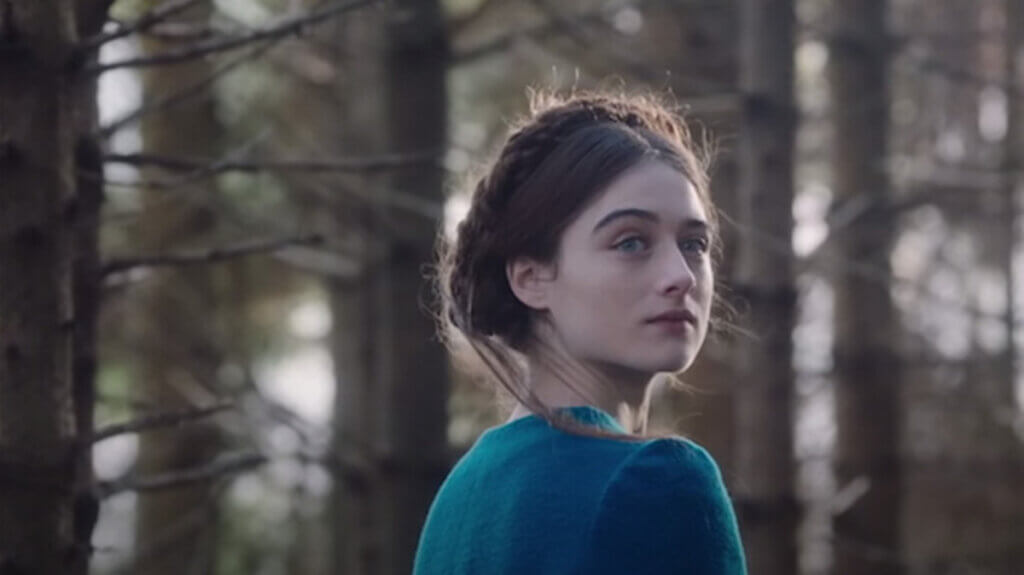Review: The Other Lamb (2019), a Mind-Bending Cult Movie
The Other Lamb (2019) is full of symbolism and jarring visuals depicting a deranged cult leader and the women under his control.
As strange as it may sound, I always thought that people judged polygamy too harshly. As long as consenting adults agree that they want to be in a polyamorous relationship or marriage, who are we to say no? When looking at polygamy in this way, it doesn’t seem to cause any harm. However, the devil is always in the details. The issue arises from the blurred line between consent and coerced consent. There’s a reason that polygamy is often associated with sectarian religions and cults; people (almost always men) abuse their power as religious “leaders” to lure young women and men into polygamist relationships. The heroine of Małgorzata Szumowska’s The Other Lamb (2019) finds herself in a similar predicament.
That said, it’s important to point out that I am conflating terms, to one degree or another. The cult at the center of the film is not, by definition, polygamist. Instead, it’s an (almost) all-female cult with a male leader, known only as “the Shephard,” who raises the women to become his wives. The women are divided into two groups: the younger sisters and the older wives. Eventually, the younger sisters can grow to become wives, creating an incestuous cycle driven by the desires of the messianic leader.
Our protagonist, Selah (Raffey Cassidy), is a younger sister who starts to see cracks in the life the Shephard has built for them. She dreams of her mother, who died giving birth to her, as well as the possibility of leaving the cult and living a normal life. However, she still struggles with her desire to believe the Shephard’s teachings and accept a seemingly inescapable lifestyle.
Our protagonist, Selah, is a younger sister who starts to see cracks in the life the Shephard has built for them.

The group lives in abandoned cabins in an isolated forest. The women tend to the sheep and abide by the Shephard’s strict religious dogma. Once Selah has grown into a young woman, the Shephard begins to show her special attention.
One night, Selah awakens to hear a police officer telling the Shephard that they cannot stay there any longer. The next day, the Shephard announces that he will be leading them to their next home. The journey is long and difficult. During the trek, Selah befriends one of the wives, Sarah, who has been shunned and punished for her sins. Sarah admits to Selah that she has lost all faith in the Shephard. She also reveals a secret about Selah’s mother that plants more seeds of doubt and frustration in Selah’s mind.
At its core, The Other Lamb (2019) is a surreal horror film about a young woman trapped in a cult. Since we’re viewing everything from Selah’s perspective, it’s not always clear when we’re seeing a vision or an event that actually happened. This allows the filmmakers to sprinkle in plenty of symbolism, particularly drawing comparisons between the feeble, helpless sheep and the women of the cult. By the final act, the filmmakers turn this juxtaposition on its head. However, for the majority of the film, the women simply have to put up with the Shephard and his self-serving religion.
By the time The Other Lamb limps across the finish line, viewers are more than ready for the women to kick things up a notch.
The film does well building toward a momentous finale. However, there are times when it feels as though the story doesn’t justify a feature-length film. The same concept could have easily been condensed into a 30-minute short film. We really don’t need endless shots of the heroine staring listlessly into the distance. So, there are times when this “slow burn” feels more like a painful crawl. In fact, by the time The Other Lamb limps toward the finale, viewers are more than ready for the action to start.

In the film’s defense, slow pacing forces viewers to really evaluate the contrived visualizations of Selah’s inner turmoil. Consequently, we (as viewers) can come to identify with her and feel the pain, confusion, and doubt that she experiences. This also helps strengthen the evolution of Selah’s character from a weak and feeble teenager to a powerful force of destruction.
That said, I hesitate to discuss the finale too much for several reasons. First, it represents the crescendo of the film, in which all of Selah’s doubt, fear, and anger reach a fever pitch. I don’t want to spoil it for others. Second, the third act of the film also serves as its weakest link. What starts as a mind-bending cult film devolves into an uninspired rape-revenge story. Rather than addressing the complexity of Selah’s emotions or trauma, we get a clean, predictable, albeit violent ending.
What started as a mind-bending cult film devolves into an uninspired rape-revenge story.
In closing, I’d like to reiterate that The Other Lamb (2019) is by no means a bad film. The sinister atmosphere, beautiful visuals, and believable performances all help create an engaging, thought-provoking, and frightening viewing experience. It’s just a shame that the filmmakers chose to venture into such familiar territory. As soon as the group sets out to find their “new Eden,” we have a pretty good idea of what’s to come.
The symbolism in The Other Lamb also falls flat as the story progresses. In fact, it comes across as amateurish and too broad to extract any profound meaning. Moreover, it would have served the film well to draw more of the women of the cult into the story. Instead, the filmmakers just focus on Selah and a few ancillary characters. In any case, The Other Lamb still stands as one of the best cult horror movies in recent memory.
The Other Lamb (2019) Movie Rating: ★★★½ out of 5
If you’d like to watch The Other Lamb (2019), it is currently available to rent or purchase via Amazon. For more film reviews like this one, be sure to check out the Philosophy in Film homepage!

